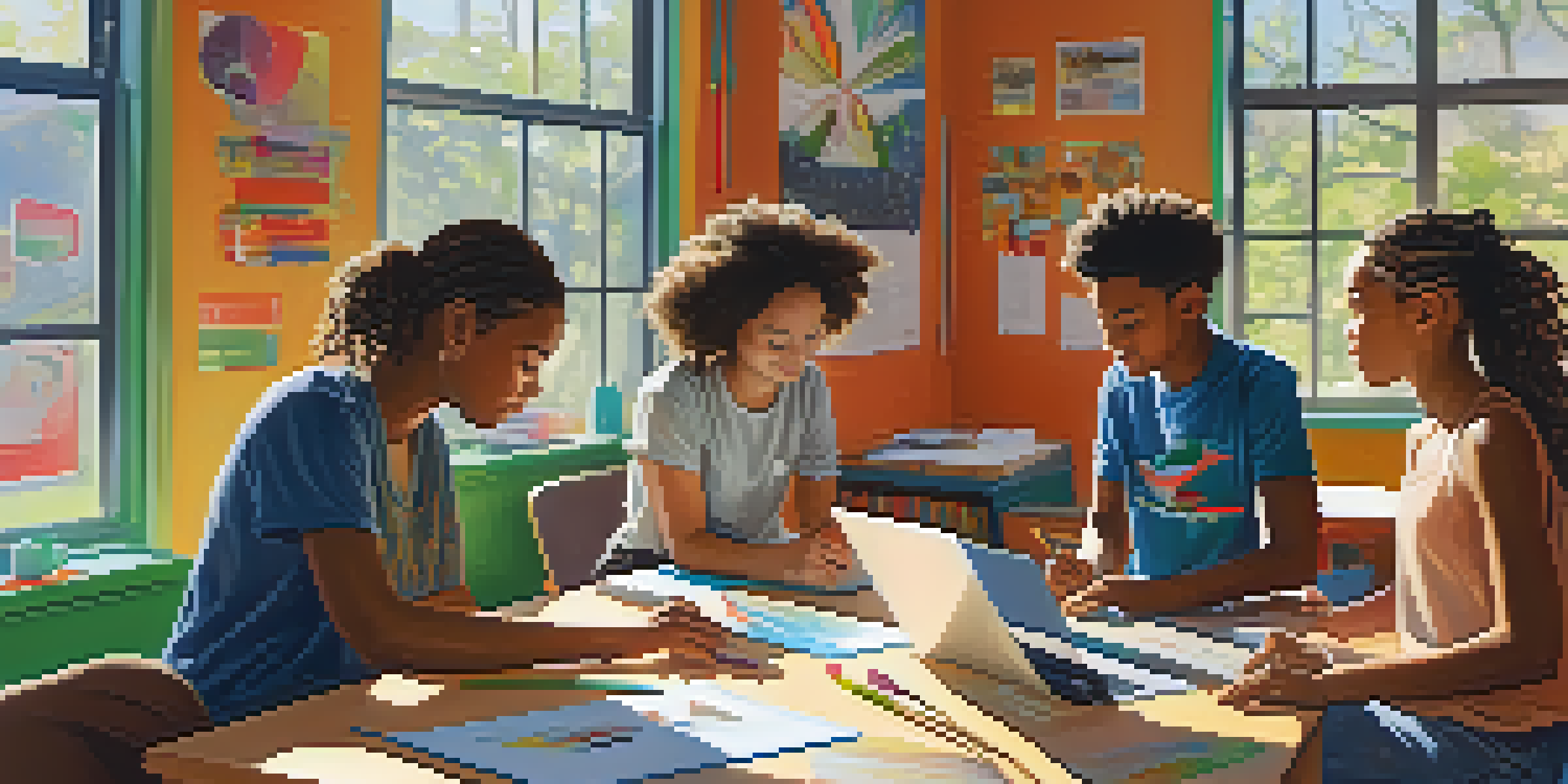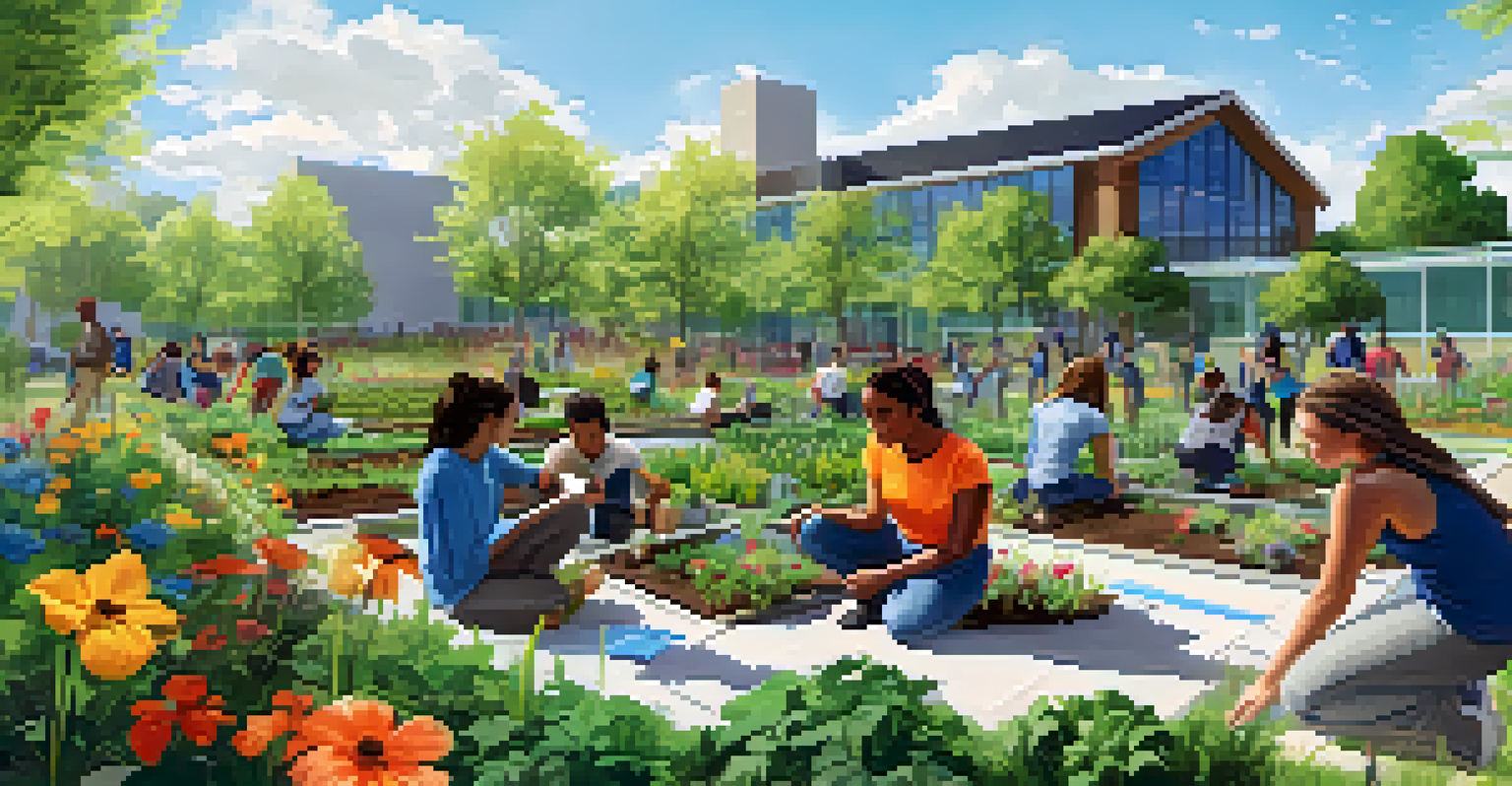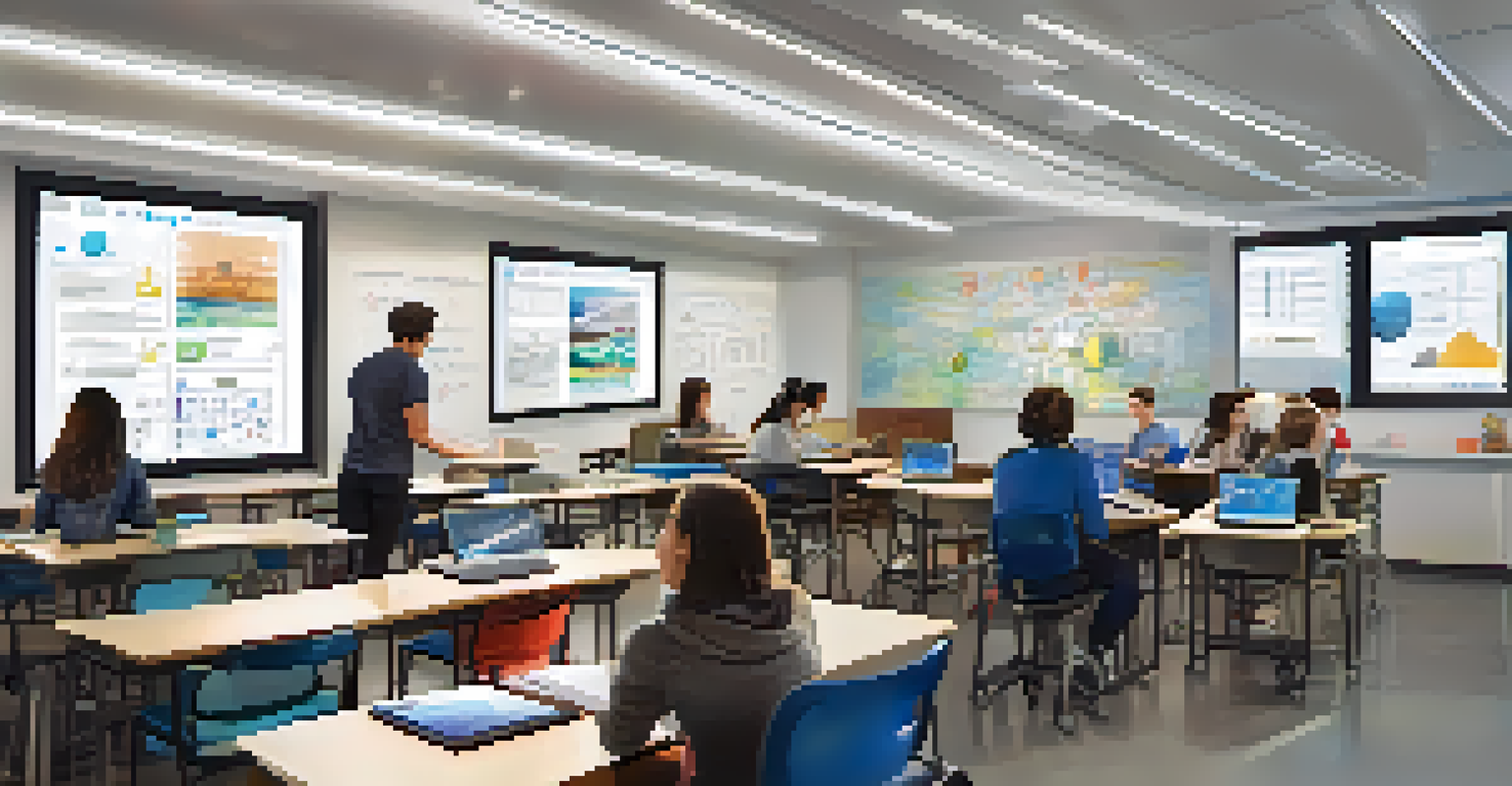Interdisciplinary Approaches in Project-Based Learning

What is Project-Based Learning and Its Benefits?
Project-Based Learning (PBL) is an educational approach where students engage in real-world projects to gain knowledge and skills. This method fosters critical thinking, collaboration, and creativity, allowing students to apply what they learn in practical situations. For instance, a group project on renewable energy can lead students to research, design, and even present their own sustainable solutions.
Project-based learning is a way to engage students with real-world problems and challenges, allowing them to explore and develop skills in a meaningful context.
One of the standout benefits of PBL is its ability to motivate students. By working on projects that are meaningful and relevant to their lives, students often find themselves more engaged and invested in their learning. This intrinsic motivation can lead to deeper understanding and retention of information, as they don't just memorize facts but learn to apply them.
Moreover, PBL encourages the development of soft skills, such as teamwork and communication, which are essential in today’s workforce. Through collaboration, students learn to navigate different perspectives and work towards common goals, preparing them for real-world challenges.
Understanding Interdisciplinary Learning
Interdisciplinary learning involves integrating concepts and methods from multiple disciplines to enhance overall understanding. This approach mirrors the complexity of real-world problems, which rarely fit neatly within a single subject area. For example, a project on urban development might require knowledge of geography, economics, and environmental science.

By breaking down the silos between subjects, students can see the connections between different fields of knowledge. This holistic view not only enriches their learning experience but also fosters innovative thinking. When students can draw on resources from various disciplines, they often come up with more creative and effective solutions.
Project-Based Learning Engages Students
PBL motivates students by involving them in real-world projects that are relevant to their lives, enhancing their learning experience.
Furthermore, interdisciplinary learning promotes adaptability and flexibility. As students encounter diverse viewpoints and methodologies, they learn to adjust their thinking and approaches, which is a valuable skill in any career path they choose.
The Harmony of PBL and Interdisciplinary Approaches
When combined, project-based learning and interdisciplinary approaches create a dynamic educational experience. This synergy allows students to tackle complex problems from various angles, leading to richer insights and solutions. For instance, a project that explores climate change can incorporate science, policy, and social studies, resulting in a comprehensive understanding of the issue.
Interdisciplinary learning encourages students to make connections between subjects, fostering a deeper understanding of the world around them.
Moreover, this combination encourages collaboration among educators as well. Teachers from different disciplines can work together to design projects that draw from their respective fields, fostering a sense of community and shared purpose. This collaborative spirit can greatly enhance the educational experience for both teachers and students.
Students benefit from exposure to multiple perspectives, which helps them develop critical thinking skills. By analyzing problems through various lenses, they can better appreciate the complexity of real-world issues and the importance of interdisciplinary teamwork.
Designing Interdisciplinary Projects: Key Considerations
Designing effective interdisciplinary projects requires careful planning and collaboration among educators. First, it’s essential to identify a central theme or question that resonates across disciplines. This thematic approach helps students see the relevance of their work and encourages deeper engagement.
Next, educators should establish clear learning objectives that reflect the goals of each discipline involved. For instance, if a project combines art and science, objectives might include understanding scientific principles through artistic expression. This clarity ensures that all educators are aligned and that students receive a cohesive learning experience.
Interdisciplinary Learning Enhances Skills
By integrating multiple subjects, interdisciplinary learning fosters critical thinking and prepares students for complex real-world problems.
Additionally, incorporating assessment methods that reflect interdisciplinary learning is critical. Traditional tests may not adequately capture the depth of understanding that comes from these projects, so alternative assessments—like presentations, portfolios, or peer evaluations—can provide a more comprehensive view of student learning.
Challenges in Implementing Interdisciplinary PBL
While the benefits of interdisciplinary project-based learning are numerous, there are challenges to consider. One of the primary hurdles is the time required for planning and execution. Coordinating schedules and aligning curricula among different teachers can be a logistical challenge, often leading to frustration.
Another challenge is the potential for uneven participation among students. Some may dominate the project while others take a backseat, which can hinder collaborative learning. Teachers need to implement strategies to ensure equitable participation, such as assigning specific roles or responsibilities to each student.
Lastly, assessment can become complicated when integrating multiple disciplines. Educators must navigate how to evaluate students fairly, taking into account the diverse skills and knowledge they bring to the table. Developing clear rubrics and expectations can help mitigate this issue, ensuring all students are assessed on their contributions and learning.
Real-Life Examples of Successful Interdisciplinary PBL
Many educational institutions have successfully implemented interdisciplinary project-based learning with impressive results. For example, a high school in California created a project where students designed a sustainable garden, incorporating biology, environmental science, and art. This hands-on experience not only taught them about ecosystems but also allowed for creative expression in design.
Another inspiring case comes from a middle school that tackled community issues by combining social studies and civic engagement. Students researched local problems and then presented their findings to local government officials, fostering a sense of responsibility and connection to their community. This project not only educated them about civic processes but also empowered them to make a difference.
Collaboration is Key in Education
Combining PBL with interdisciplinary approaches encourages teamwork among both students and educators, enriching the educational experience.
These examples illustrate how interdisciplinary PBL can engage students in meaningful ways, allowing them to apply their knowledge to real-world situations. When students see the impact of their work, it enhances their motivation and enthusiasm for learning.
Future Trends in Interdisciplinary Project-Based Learning
As education continues to evolve, the integration of technology into interdisciplinary project-based learning is becoming increasingly prevalent. Digital tools allow for collaboration across distances and provide students with access to a wealth of resources. For example, students can connect with experts worldwide, adding depth to their projects and expanding their understanding.
Additionally, there’s a growing emphasis on social-emotional learning (SEL) alongside academic skills. Educators are recognizing that fostering empathy, resilience, and teamwork is essential for student success. Interdisciplinary PBL offers an ideal platform for developing these skills, as students work collaboratively on projects that require understanding and cooperation.

Ultimately, the future of interdisciplinary approaches in project-based learning looks promising. As educators continue to seek innovative ways to engage students and prepare them for complex challenges, these methods will likely become a cornerstone of modern education, equipping students with the skills they need to thrive.